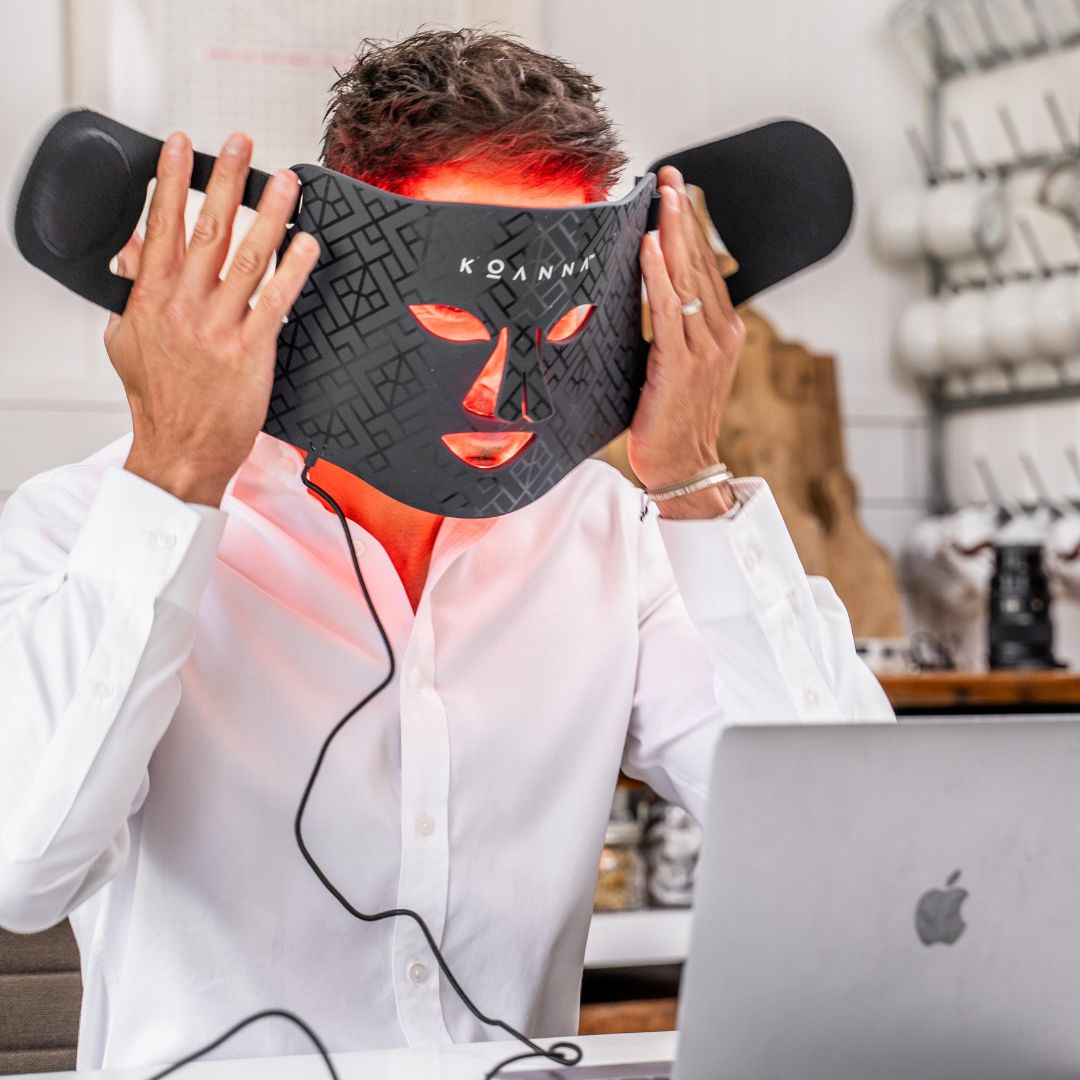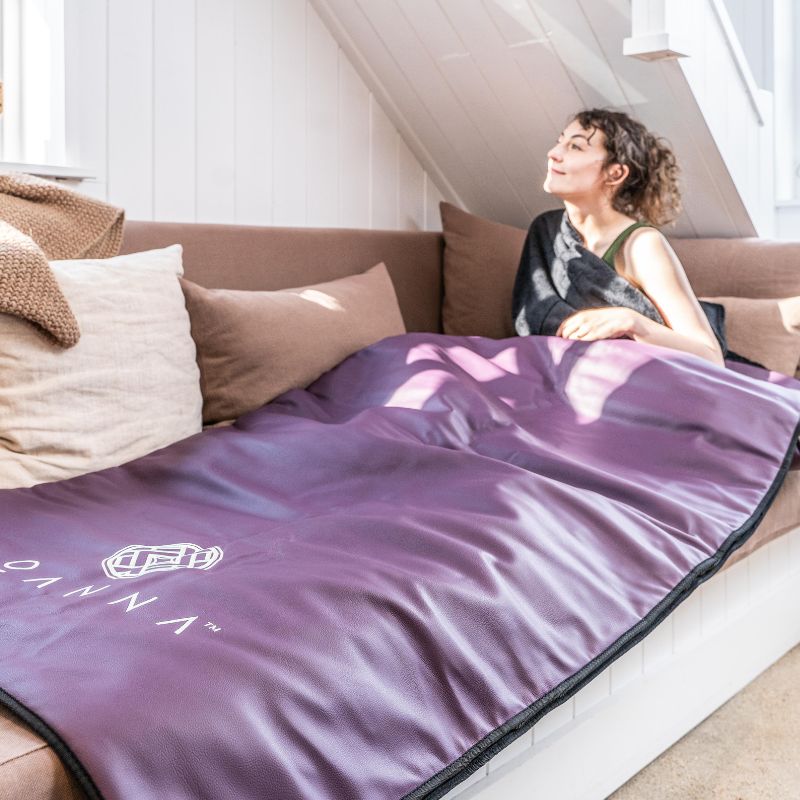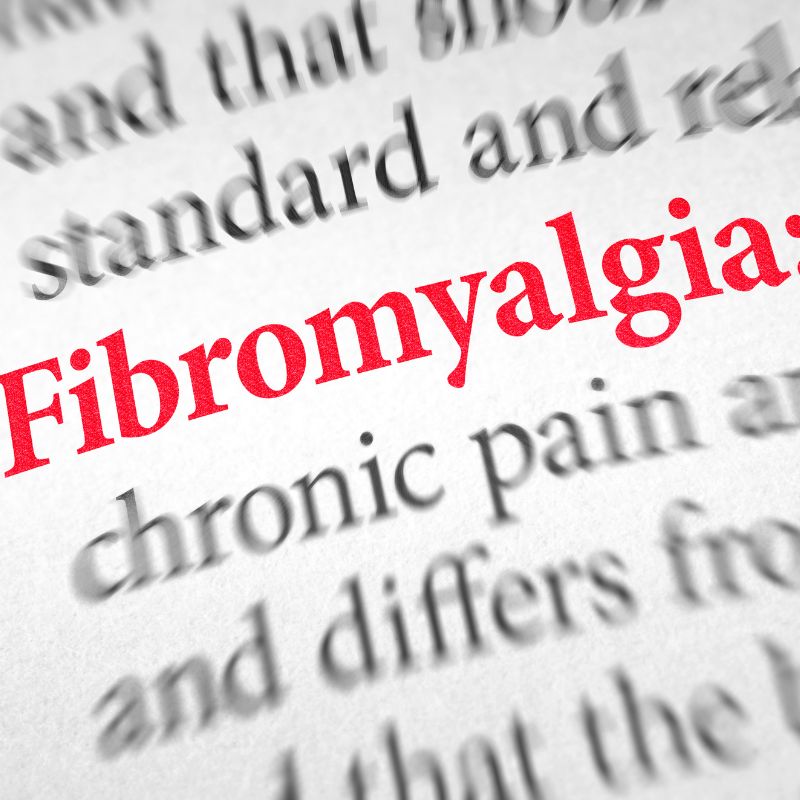LED light therapy masks are innovative devices designed to deliver the benefits of light therapy directly to the skin. By utilising an array of light-emitting diodes (LEDs), these masks offer a non-invasive skincare treatment that exposes the skin to various wavelengths of light. Each wavelength corresponds to different colours of light, which purportedly provide unique therapeutic effects. While red light is often used to stimulate collagen production and reduce inflammation, blue light is typically associated with addressing acne-causing bacteria.
These masks have gained popularity, not only for their use in clinical settings but also for home use, allowing individuals to enjoy skincare treatments in the privacy of their own homes. With a range of products on the market targeting different skin concerns, the convenience and versatility of LED light therapy masks make them a favoured choice among consumers. Despite the widespread interest, it’s important to understand both the intended benefits and the appropriate usage to ensure safety and effectiveness.
Key Takeaways
- LED light therapy masks utilise coloured wavelengths of light to address various skin concerns.
- These masks are a non-invasive and convenient option for home skincare treatments.
- Consumers should be aware of proper usage and safety considerations of LED masks.
Understanding LED Light Therapy
LED light therapy is a treatment that utilises specific wavelengths of light to target various skin concerns. This approach is becoming increasingly popular in skincare due to its ability to promote healing and improve skin conditions with minimal risks.
Mechanism of Action
LED light therapy operates on the principle that different wavelengths of light can trigger varying biological processes in the skin. These processes involve:
- Photobiomodulation: This is the core mechanism where light is absorbed by skin cells, leading to biological reactions.
- Stimulation of Mitochondria: The energy production centers of cells, mitochondria, absorb light particles and may increase energy production, which can help in cellular repair and rejuvenation.
- Collagen Production: Certain wavelengths, particularly red light, stimulate fibroblast cells which in turn can boost collagen production, potentially leading to firmer and smoother skin.
- Inflammation Reduction: LED therapy might influence molecules within cells that can reduce inflammation, often a key factor in skin conditions and healing.
Types of LED Light
LED light therapy devices emit light at specific wavelengths, each offering distinct benefits:
- Blue Light (400–495 nm): Known for its antibacterial properties, blue light is often used to treat acne.
- Red Light (620–700 nm): Commonly used to stimulate collagen production, aiding in wrinkle reduction and providing an overall rejuvenated appearance.
- Near-Infrared (700–1400 nm): Though not visible, near-infrared is believed to penetrate deeper into skin layers, possibly further reducing inflammation and promoting healing.
The integrated use of these lights allows for tailoring treatment to individual skin needs, making LED light therapy a versatile option for a variety of skin concerns.
Benefits of LED Light Therapy Masks
LED light therapy masks offer a range of benefits for skin health, targeting specific skin concerns with light wavelengths. Here's how they can be beneficial:
Skincare and Anti-Aging
LED light therapy masks contribute to skin rejuvenation, boosting collagen production which is key in reducing the appearance of wrinkles and fine lines. Consistent use can lead to smoother skin and may help diminish age spots and hyperpigmentation, leading to a more even skin tone.
Acne and Inflammation Treatment
By utilising specific wavelengths of light, these masks have an antibacterial effect which can target acne-causing bacteria, reducing acne and preventing future breakouts. They can also help in alleviating redness and inflammation, conditions often associated with acne-prone skin.
Promoting Wound Healing
The therapeutic use of LED light, particularly red and infrared wavelengths, aids in skin healing and wound healing processes. This can benefit not only post-injury recovery but also chronic conditions such as eczema, psoriasis, and rosacea.

Types of LED Light Masks
LED light therapy masks come in various designs, each tailored to suit different skin care needs and preferences. The choice of an LED mask can depend on the area of the skin targeted, the intensity of light therapy required, and specific skin conditions being addressed.
Full Face Masks
Full-face LED masks cover the entire face and are designed to provide a uniform treatment across the skin surface. These masks typically have eye holes for visibility and safety. Many are equipped with a combination of red and blue light settings that offer various skincare benefits.
Targeted Masks for Specific Areas
Targeted masks are smaller devices that focus on specific areas of the face, such as the eyes, mouth, or forehead. These masks are ideal for concentrating on problem areas with precision. For example, a mask that targets the area around the eyes might focus on reducing fine lines and dark circles.
Neck and Decolletage Masks
Specifically designed for the neck and décolletage area, these LED masks extend the benefits of light therapy beyond the face. Since the skin on the neck and chest can show signs of ageing, these targeted masks help to rejuvenate and maintain skin health in these areas.
Combination Light Masks
Combination light masks offer multiple light settings within the same device, enabling users to tailor their treatment. The versatility of these masks allows users to switch between functions, such as red light for anti-ageing benefits and blue light for addressing acne concerns. Some combination light masks are also wireless, adding ease of use and convenience.
LED Light Mask Usage and Application
LED light mask therapy is an innovative procedure for skin rejuvenation and treatment. It employs light-emitting diodes to deliver light waves of various lengths, which penetrate the skin at different levels.
Home Devices Versus Professional Treatments
Home devices have gained popularity due to their ease of use and the comfort of applying the treatment in one's own space. These devices typically include features like a timer for precisely managing treatment length. While at-home LED masks may offer convenience, professional treatments conducted by a dermatologist often employ more powerful devices and can, therefore, yield more significant results. However, these days at home devices from leading brands are now just as powerful and effective as in clinic treatments.
How to Use an LED Light Mask
One should commence by cleansing the skin to ensure it's free from makeup and dirt. Post-cleansing, the LED mask can be placed directly onto the skin. Masks generally come with straps or a handheld design for ease of application. A session typically lasts around 20 minutes, with the device often featuring a built-in timer to auto-shutoff after the treatment.
Treatment Duration and Frequency
The frequency and duration of LED light therapy can vary. Most manufacturers suggest using the at-home device for about 20 minutes per session, with sessions held up to three times per week. One should adhere to the specifications set out by the mask’s manufacturer and consult with a dermatologist to personalise the treatment schedule according to their particular skin concerns and goals.
Considerations Before Using LED Masks
Before one considers utilising an LED mask, it is vital to understand the importance of safety, tailoring the choice to one's skin type, and being aware of potential side effects.
Safety and Precautions
When using LED masks, safety should be the paramount concern. Users should always follow the manufacturer's instructions carefully to avoid misuse. Prior to starting treatment, it is advisable to consult with a dermatologist or esthetician, especially for individuals with sensitive skin. LED masks should be certified to meet safety standards, and one should ensure they are using a skincare wand or mask from a reputable brand with proven efficacy.
Choosing the Right Mask for Your Skin Type
Every skin type responds differently to LED light therapy. Here are specific considerations for various skin types:
- Oily Skin: Look for masks that offer blue light, which targets bacteria and can help in reducing acne.
- Dry Skin: Masks with red light may promote healing and are said to stimulate collagen production.
- Combination Skin: A mask that offers a combination of different lights can be beneficial, providing a more tailored treatment.
Sensitive skin types should proceed with caution and may require a lower intensity setting or shorter session times.
Potential Side Effects
While LED masks are generally considered safe, potential side effects may occur. These can often be minimized with proper use. Some common side effects include:
- Dryness: While some may experience hydration benefits, others might find their skin feels drier post-use.
- Redness: This is typically temporary, but individuals with extremely sensitive skin might experience persistent redness.
It remains critical for all skin types and tones to start with shorter sessions and gradually increase as their skin adapts to the treatment.
Advancements in LED Therapy Technology

LED light therapy masks have seen considerable technological evolution, stemming from space-age developments to the inclusion of novel features that cater to a diverse range of skincare needs. These advancements aim to enhance the depth of light penetration, increase radiance, and offer options to fit every budget.
NASA's Role in LED Development
NASA has played a pivotal role in the advancement of LED technology. Their research in the 1990s focused on promoting wound healing in astronauts through the application of LED light, which encouraged the growth of cells and tissue. This research underpins the foundation of modern LED therapy, where the depth of light penetration is key to its effectiveness in skin rejuvenation. It is NASA's investigations that have allowed LED masks to move beyond simple dermatological applications and into the arena of luxury skincare tools with a variety of functions.
Innovative Features in Modern LED Masks
The LED masks available today are a testament to the ongoing enhancement of the technology. They often come equipped with a spectrum of colour options, each designed to target specific skin concerns. For instance:
- Blue LED light is frequently utilised for its antibacterial properties, primarily used to treat acne.
- Red LED light is favoured for its potential to stimulate collagen production, aiming to reduce wrinkles and fine lines.
With advancement in charging methods, contemporary masks offer the convenience of rechargeable batteries, allowing for cordless use. Manufacturers now integrate multiple wavelengths in a single session to provide customised treatments, optimising the radiance and health of the skin.
Furthermore, modern LED masks cater to various price points from budget-friendly options to high-end luxury models, ensuring accessibility for a wide audience interested in harnessing the benefits of this technology.
Complementary Products and Routines
When utilising an LED light therapy mask, it's essential to incorporate suitable skincare products to enhance the benefits. Dermatologists often recommend:
- Serums: Rich in active ingredients, serums should be applied after LED therapy to promote absorption and efficacy.
- Creams: Moisturising creams can help soothe the skin and should be used to maintain hydration after the light therapy.
- Ointments: In cases of skin irritation or specific conditions, the use of medicated ointments post-therapy might be suggested.
Long-Term Skin Care Benefits
The long-term advantages of incorporating an LED light therapy mask into one's skincare routine include:
- Anti-Ageing Effects: Regular use may reduce the appearance of fine lines and wrinkles, aiding in the maintenance of youthful skin.
- Improved Skin Tone: Consistency with LED masks could lead to an even skin tone, reducing spots and hyperpigmentation.
Facials and other professional skincare services can benefit from the inclusion of LED light therapy as a supplementary procedure. Over time, this synergy may enhance the overall health and appearance of the skin when paired with routine skincare practices.
Real-World User Experiences
In the realm of LED light therapy masks, personal testimonials and consumer feedback provide insight into their effectiveness and popularity. These shared experiences, whether from high-profile endorsements or customer reviews, offer valuable perspectives on the efficacy of these skincare tools.
Celebrity Endorsements
Victoria Beckham is known for her interest in skin health and has publicly shared her experience with LED light therapy masks. She has endorsed their use in her skincare routine, suggesting they may contribute to her clear skin. Similarly, Kourtney Kardashian has endorsed the LED mask trend, which has undoubtedly influenced their popularity. Their endorsements suggest that these masks might hold value for those prioritising skin health and appearance.
Frequently Asked Questions
LED light therapy masks are emerging as a popular tool in skincare, utilising various light wavelengths to address different skin concerns.
How does an LED light therapy mask benefit the skin?
LED light therapy masks emit specific wavelengths of light that target various skin issues. For instance, red light may encourage collagen production, potentially reducing the appearance of fine lines and aiding in the healing process.
Can LED light therapy be harmful, and what are the potential risks?
While generally considered safe for most users, those with genetic eye conditions are complex skin issues should consult a medical practitioner before starting any treatment.
In what ways does red light therapy differ from other LED treatments?

Red light therapy primarily aims to stimulate collagen production and speed up healing, while other LED treatments, such as blue light therapy, focus on killing bacteria that contribute to acne.
What should one look for when choosing the best LED face mask?
In selecting an LED face mask, one should consider the wavelengths offered, the mask's fit and comfort, its adherence to safety standards, and any additional features that address their specific skin needs.
Is there substantial evidence supporting the efficacy of LED light therapy?
There is a growing body of research indicating the efficacy of LED light therapy in treating acne, promoting wound healing, and addressing signs of aging, though results can vary and more studies are still being conducted.
How does LED technology in esthetics differ from traditional skincare treatments?
LED technology in aesthetics offers a non-invasive alternative to traditional skin treatments. It uses light-based energy to initiate biological processes in the skin as opposed to applying topical creams or performing manual procedures.



